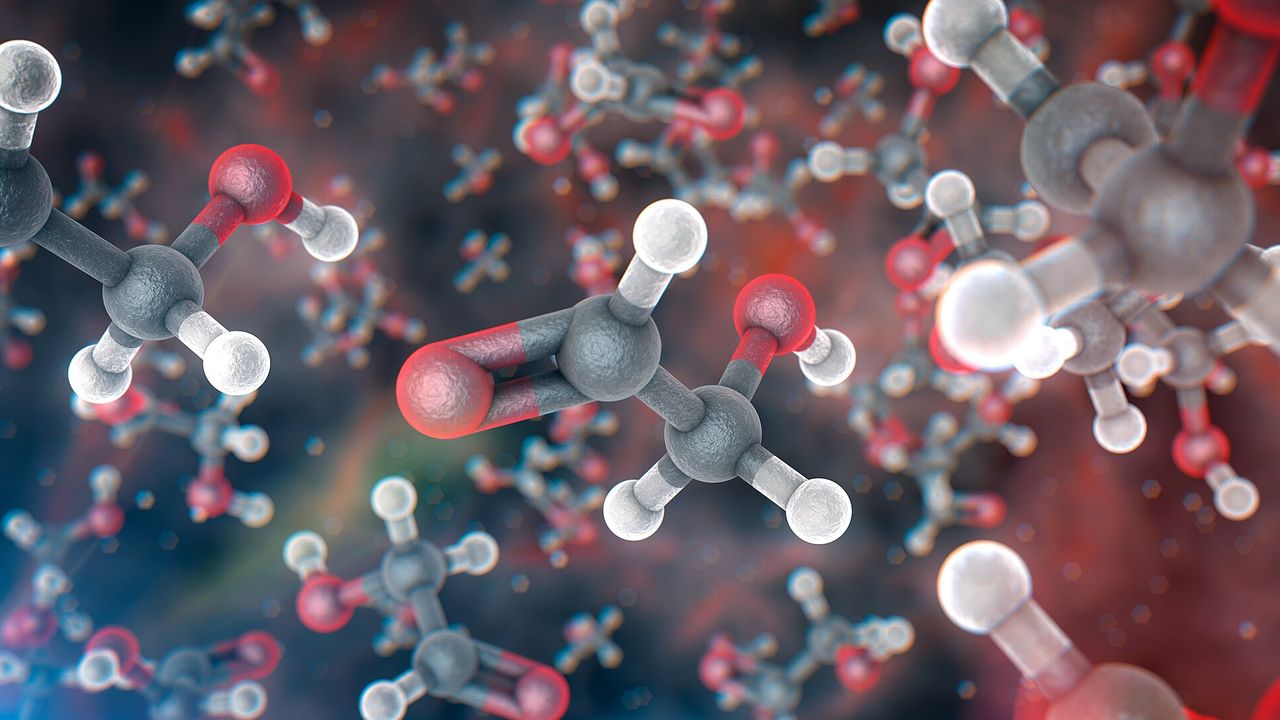Science
New Study Questions Origin of Organic Molecules on Enceladus

Recent research has revealed that some organic molecules found in plumes from Saturn’s moon Enceladus might result from natural radiation rather than originating from the moon’s subsurface ocean. This development complicates the understanding of the astrobiological significance of these compounds, which were previously thought to indicate a potentially habitable environment.
Enceladus conceals a global ocean beneath its icy crust. Material from this liquid reservoir is ejected into space through cracks near the south pole, forming plumes of ice particles that can extend hundreds of kilometers. While much of this material falls back to the moon’s surface, some contributes to Saturn’s E ring, the planet’s outermost and widest ring. Between 2005 and 2015, NASA’s Cassini spacecraft made numerous passes through these plumes, detecting various organic molecules and suggesting a chemically rich habitat beneath the ice.
To explore the impact of space radiation, a team led by planetary scientist Grace Richards at the National Institute for Astrophysics in Rome conducted laboratory experiments simulating conditions near Enceladus’s surface. They mixed water, carbon dioxide, methane, and ammonia, the expected components of surface ice, and cooled the mixture to −200°C in a vacuum chamber. The team then bombarded this mixture with water ions, a key element in the moon’s radiation environment.
The radiation induced a series of chemical reactions, resulting in a range of molecules, including carbon monoxide, cyanate, ammonium, and various alcohols, along with molecular precursors to amino acids like formamide and acetylene. These findings imply that similar reactions could occur on Enceladus under its unique conditions.
Richards presented these findings at the Europlanet Science Congress in Helsinki, Finland, and published a detailed report in Planetary and Space Science. The new study raises fundamental questions about whether the organic molecules detected in Enceladus’s plumes are derived from the moon’s hidden ocean, formed in space, or produced near the surface after the plumes have ejected material from the interior.
While this study does not eliminate the possibility of a habitable ocean on Enceladus, Richards emphasizes the importance of understanding all processes that modify material before it is observed in space. “When you’re trying to infer this ocean composition from what you’re seeing in space, it’s crucial to account for all contributing factors,” she stated.
Researcher Alexis Bouquet from the French National Centre for Scientific Research underscored the significance of simulating these environments in the lab, which is vital for preparing future missions to Enceladus. He noted that the intense radiation surrounding Jupiter makes these experiments particularly relevant, especially for upcoming missions such as NASA’s Europa Clipper and the European Space Agency’s JUICE (Jupiter Icy Moons Explorer).
As Richards’s work casts doubt on the origins of organic compounds around Enceladus, additional research continues to expand the understanding of the moon’s chemical landscape. A team led by Nozair Khawaja at the Freie Universität Berlin recently reported new types of organic molecules discovered during the Cassini mission. Their findings, published in Nature Astronomy, include ester and ether groups along with cyclic species containing double bonds of oxygen and nitrogen.
On Earth, these molecules are essential for complex chemical reactions necessary for life. Khawaja remarked that while these molecules might have an inorganic origin, they enhance Enceladus’s potential for habitability. Their analysis suggests that complex organic molecules are present in fresh ice grains expelled from the moon’s vents, which were sampled by Cassini during a close approach in 2008.
Khawaja estimates that the ice grains did not remain in space long enough for radiation to significantly influence their chemistry, which raises questions about the role of radiation in producing the organic molecules detected. Bouquet added that large grains loaded with organics are challenging to explain solely through radiation chemistry.
Both studies highlight the intricate chemistry of Enceladus, reaffirming its status as a prime target in the search for extraterrestrial life or its building blocks. The moon possesses the essential ingredients for life: liquid water, an energy source, and a diverse array of chemical elements and molecules. Even though the subsurface ocean lies several kilometers beneath the ice, the plumes represent a unique opportunity to sample an extraterrestrial liquid ocean.
Plans for a potential ESA mission targeting Enceladus are already in development, which may involve high-speed flybys through the plumes and possibly a lander at the south pole. Insights from the recent studies will inform the design of instrumentation and guide the interpretation of future results, as researchers aim to unlock the secrets of this enigmatic moon. As Khawaja aptly stated, “There is no better place to look for [life] than Enceladus.”
-

 Science2 months ago
Science2 months agoInventor Achieves Breakthrough with 2 Billion FPS Laser Video
-

 Health2 months ago
Health2 months agoCommunity Unites for 7th Annual Into the Light Walk for Mental Health
-

 Top Stories2 months ago
Top Stories2 months agoCharlie Sheen’s New Romance: ‘Glowing’ with Younger Partner
-

 Entertainment2 months ago
Entertainment2 months agoDua Lipa Aces GCSE Spanish, Sparks Super Bowl Buzz with Fans
-

 Health2 months ago
Health2 months agoCurium Group, PeptiDream, and PDRadiopharma Launch Key Cancer Trial
-

 World2 months ago
World2 months agoIsrael Reopens Rafah Crossing After Hostage Remains Returned
-

 Top Stories2 months ago
Top Stories2 months agoFormer Mozilla CMO Launches AI-Driven Cannabis Cocktail Brand Fast
-

 Entertainment2 months ago
Entertainment2 months agoMother Fights to Reunite with Children After Kidnapping in New Drama
-

 World2 months ago
World2 months agoR&B Icon D’Angelo Dies at 51, Leaving Lasting Legacy
-

 Business2 months ago
Business2 months agoTyler Technologies Set to Reveal Q3 Earnings on October 22
-

 Health2 months ago
Health2 months agoNorth Carolina’s Biotech Boom: Billions in New Investments
-

 Health2 months ago
Health2 months agoYouTube Launches New Mental Health Tools for Teen Users









